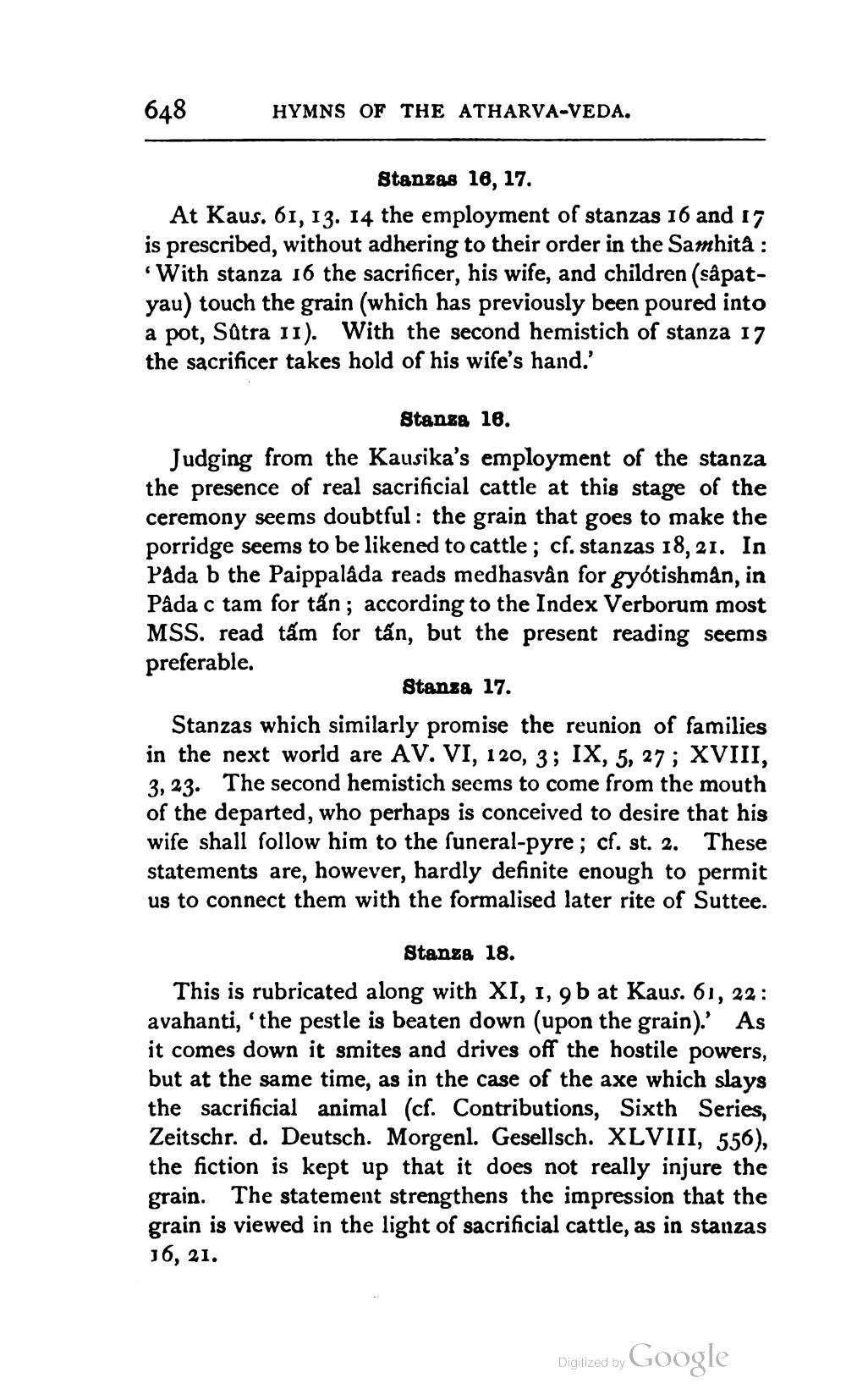________________
648
HYMNS OF THE ATHARVA-VEDA.
Stanzas 16, 17. At Kaus. 61, 13. 14 the employment of stanzas 16 and 17 is prescribed, without adhering to their order in the Samhita : With stanza 16 the sacrificer, his wife, and children (såpatyau) touch the grain (which has previously been poured into a pot, Satra 11). With the second hemistich of stanza 17 the sacrificer takes hold of his wife's hand.'
Stanza 18. Judging from the Kausika's employment of the stanza the presence of real sacrificial cattle at this stage of the ceremony seems doubtful: the grain that goes to make the porridge seems to be likened to cattle ; cf. stanzas 18, 21. In Pada b the Paippalada reads medhasvân for gyótishman, in Pada c tam for tán; according to the Index Verborum most MSS. read tấm for tấn, but the present reading seems preferable.
Stanza 17. Stanzas which similarly promise the reunion of families in the next world are AV. VI, 120, 3; IX, 5, 27; XVIII, 3, 23. The second hemistich seems to come from the mouth of the departed, who perhaps is conceived to desire that his wife shall follow him to the funeral-pyre; cf. st. 2. These statements are, however, hardly definite enough to permit us to connect them with the formalised later rite of Suttee.
Stanza 18. This is rubricated along with XI, 1, 9 b at Kaus. 61, 22: avahanti, 'the pestle is beaten down (upon the grain).' As it comes down it smites and drives off the hostile powers, but at the same time, as in the case of the axe which slays the sacrificial animal (cf. Contributions, Sixth Series, Zeitschr. d. Deutsch. Morgenl. Gesellsch. XLVIII, 556), the fiction is kept up that it does not really injure the grain. The statement strengthens the impression that the grain is viewed in the light of sacrificial cattle, as in stanzas 16, 21.
Digized by Google




